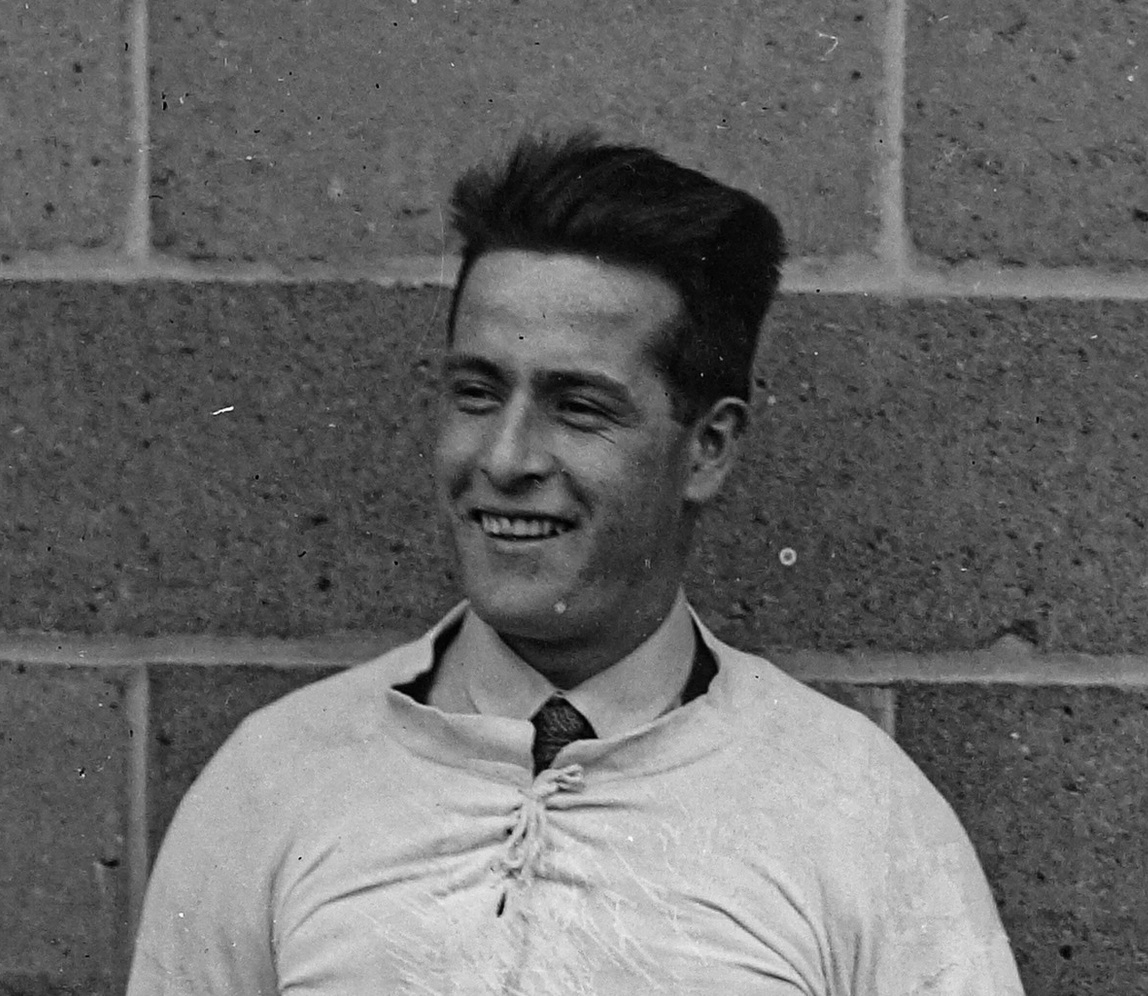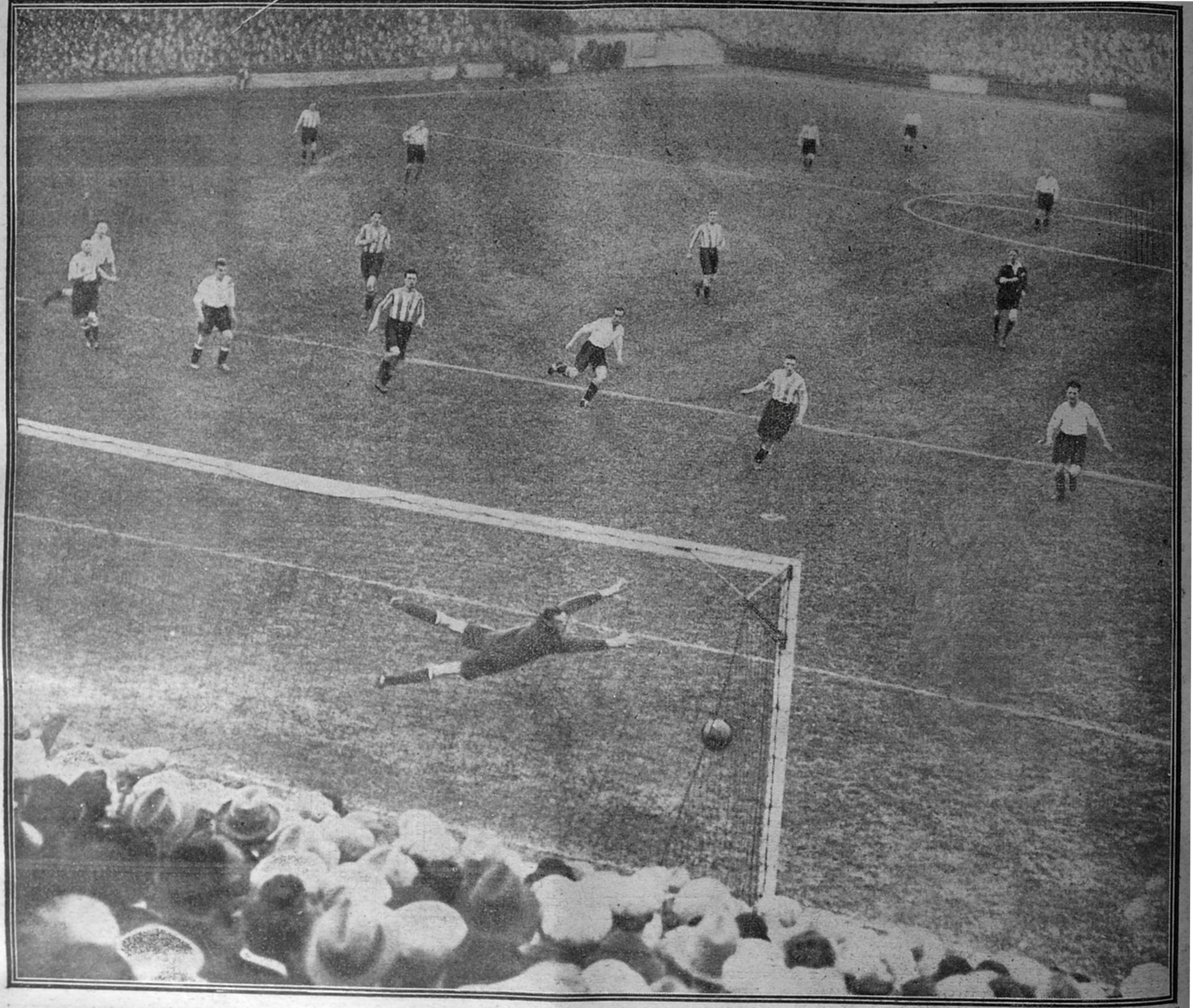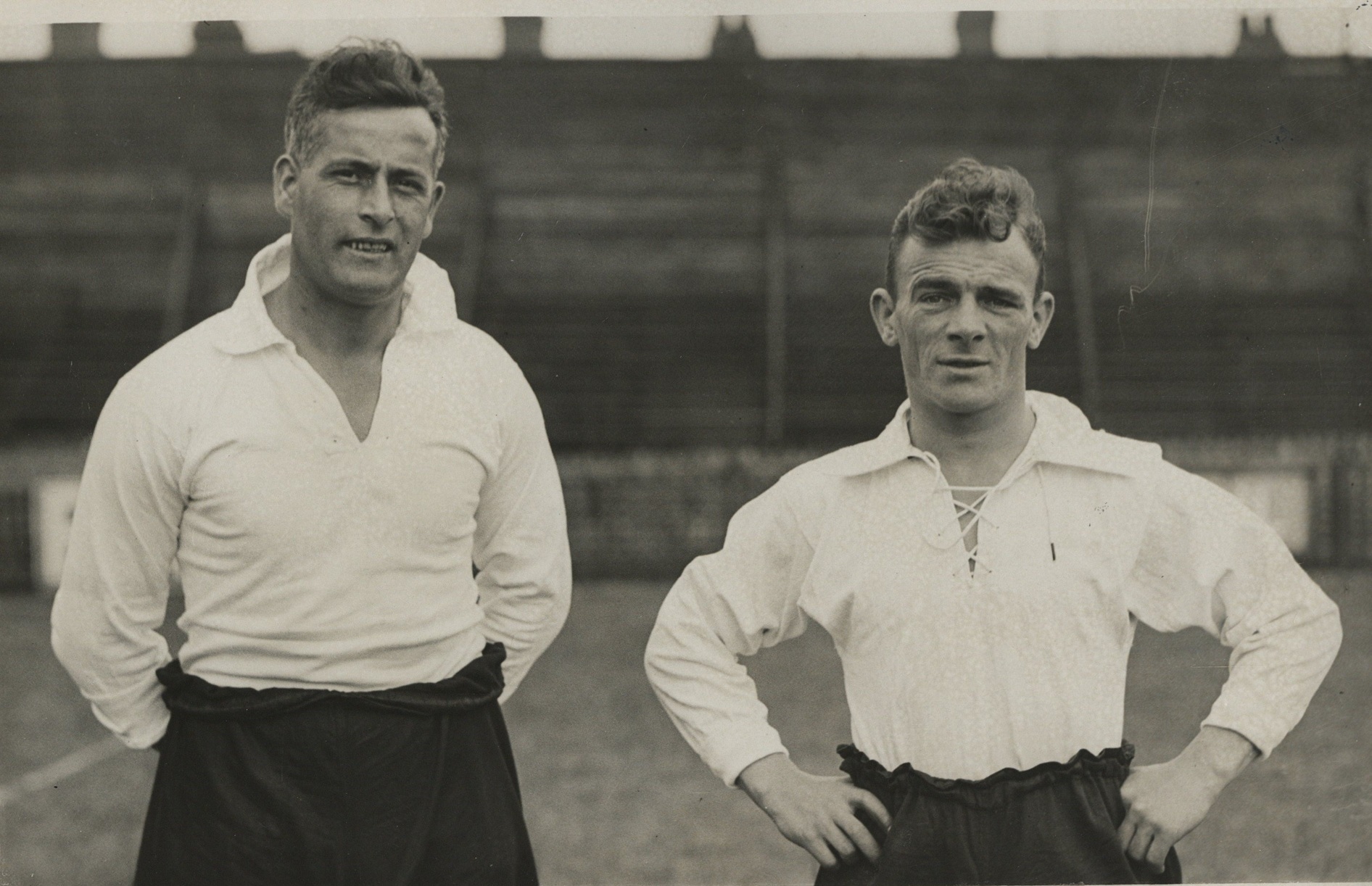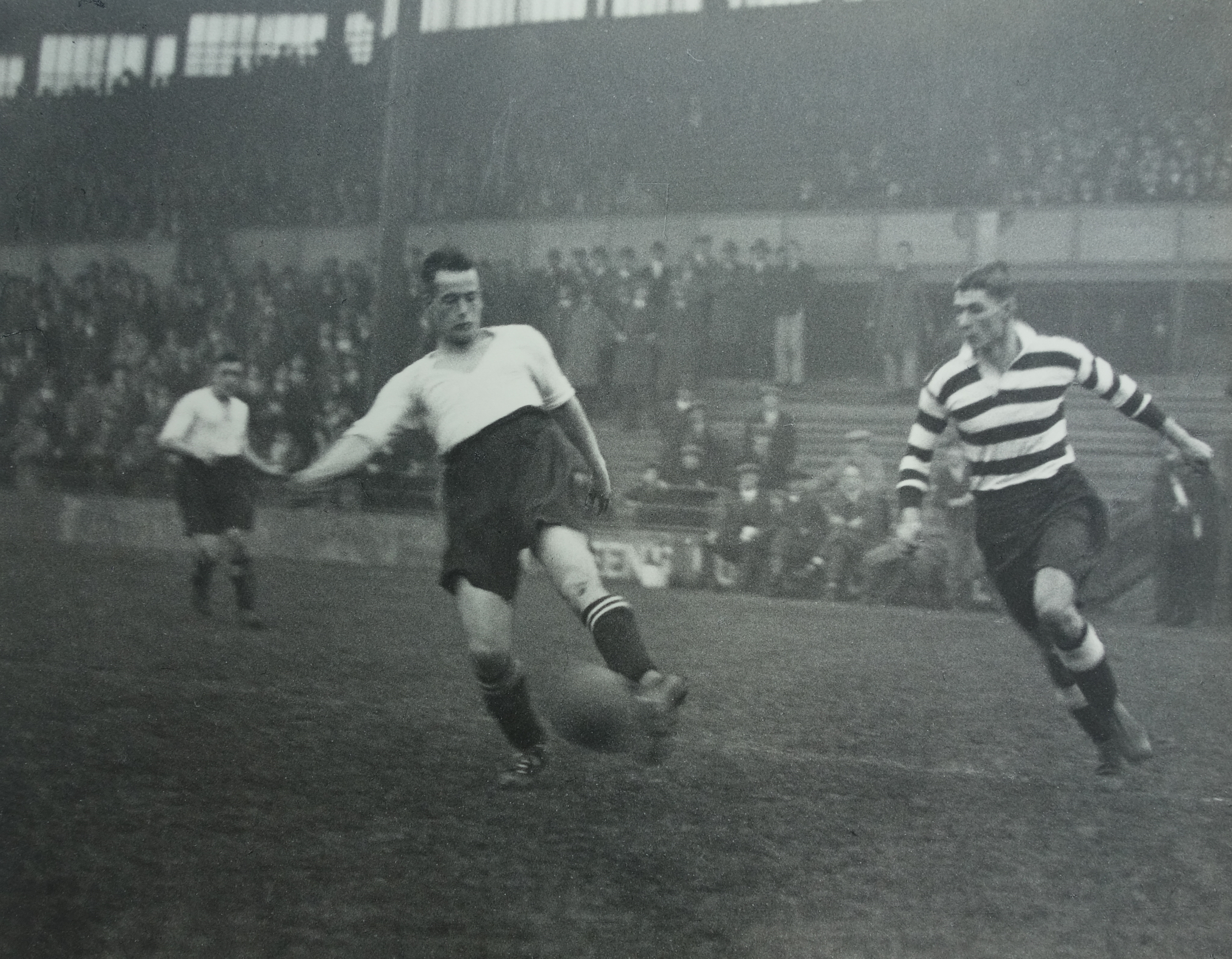andy rennie - the unlikely goalscorer

The Coventry Evening Telegraph on the 12th
October 1928 had no doubt who the main threat was in the following day’s match.
‘The menace contained in the Luton attack particularly applies to Andrew
Rennie…if Coventry can prevent his scoring tomorrow they will the first to do
so in seven matches’. They did not.
The goal that Rennie scored in the 1-1 draw was no ordinary
one either. Responding almost immediately to falling behind, Luton initiated a
good attack that saw the ball find its way to the Town’s striker who, after
avoiding an ugly attempt at a challenge, hammered in a beautiful drive that had
Coventry ‘keeper Tommy Allen beaten all ends up.
Fortunately a photographer was on hand to capture the moment
and the resulting picture has become one of the most famous taken at Kenilworth
Road. Indeed, it would even hang for many years in the Coventry City boardroom
and the goal was talked about by both sets of fans for years to come.
Below: The famous picture, showing Rennie equalising against Coventry

Rennie was born in Bailliston, Glasgow in 1901 and played
much of his early football in goal. It was at junior club Kilwinning Rangers
that he moved to centre-half, and it was as such that he joined Luton in
December 1925 after a trial.
His debut came against Swindon two months later and he’d
make 53 appearances over the next season and a half as a robust defender. Then,
at the start of the 1927/28 campaign an injury crisis saw him trialled as a
forward, beginning with a 3-2 defeat at Millwall in October. Rennie scored with
a fine first time shot and it began the most remarkable spell of goalscoring
the club had ever known.
Over the next season and three quarters he would net 69
times in 81 games, including an incredible 48 in 46 games in 1928/1929. His
left footed shot quickly became feared by defences across the country and he
gained a reputation as someone who could score from almost anywhere in the
opposition’s half.
A particular highlight came in September 1929 when Town
travelled to Watford for a 3rd Division (now League 1) match. The
Hatters had never won at Vicarage Road, and were without a victory in Watford
full stop since 1915. This was put right in emphatic fashion with a 4-0 victory,
Andy Rennie hitting one of his ten hat-tricks for the club. ‘Hertfordshire rang
out with Bedfordshire cheers,’ notes the match report.
He would suffer a nasty knee injury in a collision with
Torquay ‘keeper Harold Gough in October 1931 at Plainmoor. Having to travel
home in great pain, trainer Horace Pakes was deputised to bring Andy his meals,
while the offer of a pair of ‘bobby-dazzler’ pyjamas from an (unnamed!)
teammate when they reached the hotel was politely turned down. Rennie was out
for three months in all and was still struggling to walk two weeks after the
injury.
Below: Rennie (left) with George Pearson

Nicknamed Ratty due to his percieved surly attitude on the
pitch, he served two separate month long bans for indiscipline, including the
‘pulling of the nose’ of Orient’s half-back Lawrence in March 1931. ‘He thought
I was scared of him and dared me to do it….so I did,’ was Rennie’s plain explanation.
This was at odds to his personality outside of the game,
where he was noted as jovial and caring. Journalist JJ Hunt, a close friend,
recalled a story of the two of them in Merthyr. Upon seeing a woman searching
the gutters, Rennie walked over and handed over an apparently reasonable sum of
money, for which the woman offered profuse thanks. Andy refused to reveal the
amount given, instead saying, ‘I can earn that today, but an old lady like that
needs to pay her rent.’ Hunt suggested that the woman may not have a house.
‘Well, she should have,’ Rennie replied.
Though some noted he was never quite the same player after
his knee injury he still managed 81 in 185 games over six more seasons, during
which he would become Town’s record goalscorer with 162 in all (even now only
Gordon Turner can better his tally). His time at the club would come to an end in December 1934 when a fall
out with the directors saw him leave for Newport County, though he was soon
back in Luton, working for brewer JW Green.
Sadly Andy’s life after football would be short. In the
summer of 1938 he checked into the Bute Hospital for a routine hernia
procedure, and though the operation was a success, he subsequently developed
acute pneumonia and died on the 5th of September, at the age of just
36. He left behind a wife and two young daughters, Maureen and Isabell.
Those who knew him were devastated, including JJ Hunt. ‘If
ever I felt disposed to shed a tear over the passing of an old friend and a
great player, it is today.’ Andy was buried in Luton General Cemetary, his
headstone noting him a loving Husband and Father. He is also a Luton Town
legend.
Below: Rennie in action.

